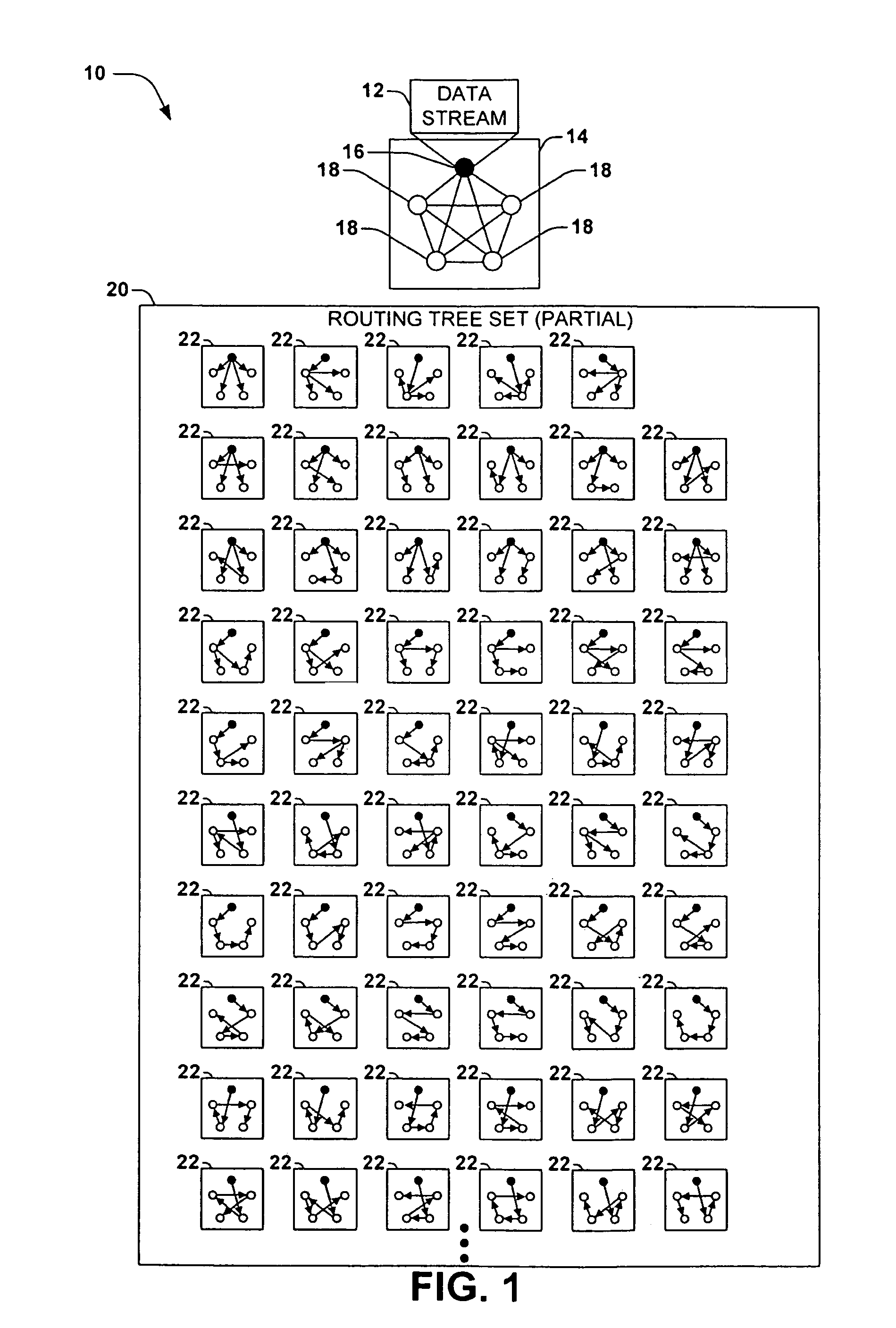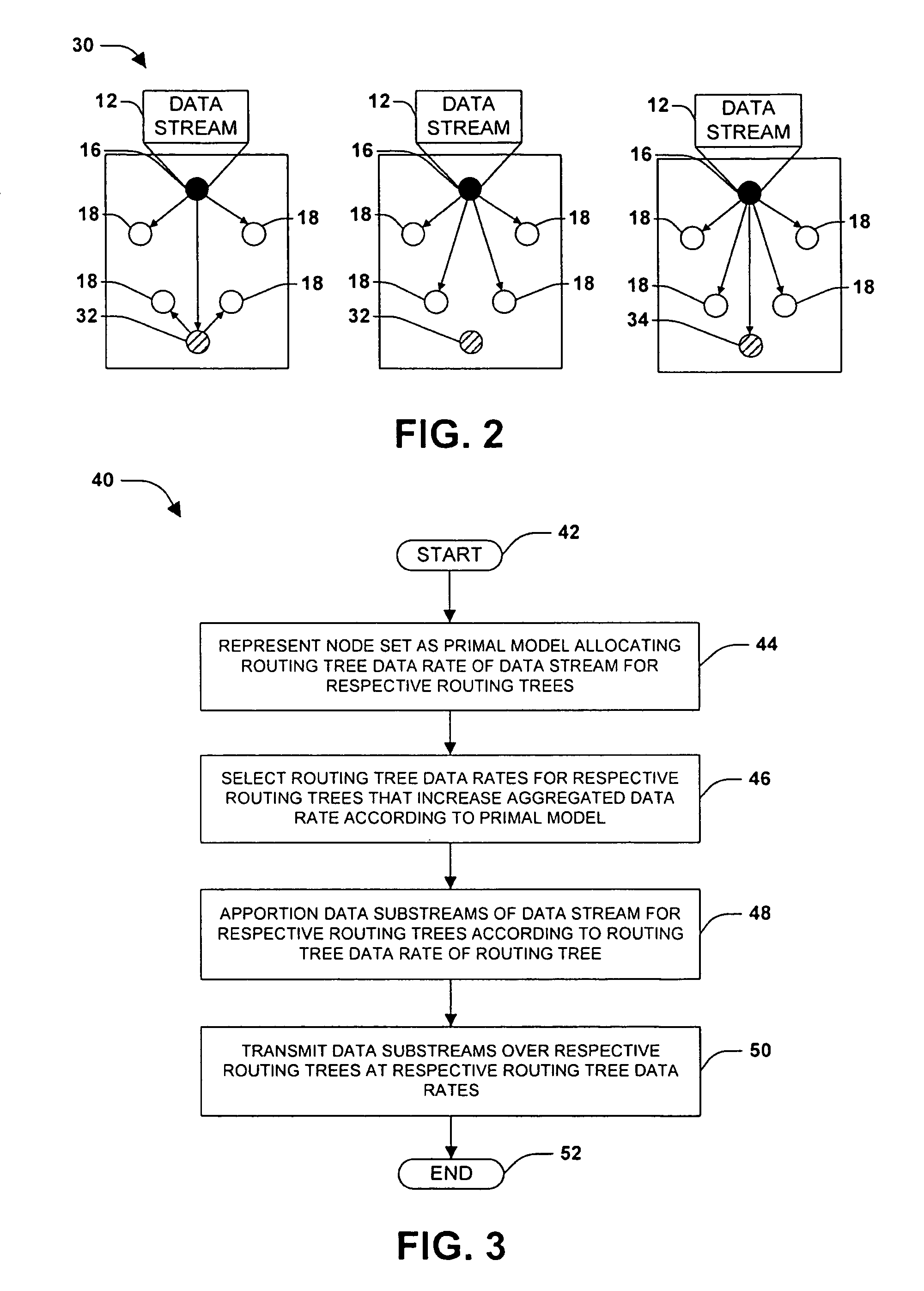Models for routing tree selection in peer-to-peer communications
a peer-to-peer communication and model technology, applied in the field of peer-to-peer communications model, can solve the problems of difficult selection of routing patterns that enable a comparatively high theoretical throughput, and achieve the effect of increasing the theoretical throughput of the session, increasing the capacity, and high theoretical throughpu
- Summary
- Abstract
- Description
- Claims
- Application Information
AI Technical Summary
Benefits of technology
Problems solved by technology
Method used
Image
Examples
Embodiment Construction
[0019]The claimed subject matter is now described with reference to the drawings, wherein like reference numerals are used to refer to like elements throughout. In the following description, for purposes of explanation, numerous specific details are set forth in order to provide a thorough understanding of the claimed subject matter. It may be evident, however, that the claimed subject matter may be practiced without these specific details. In other instances, structures and devices are shown in block diagram form in order to facilitate describing the claimed subject matter.
[0020]Peer-to-peer communication sessions involve a transmission of a data stream among a set of nodes (e.g., computers or devices) over a communications network. In contrast with more conventional data transfer sessions wherein a source sends the data stream to all receivers, a peer-to-peer communications session enables receivers to retransmit a portion of the data stream to other receivers. By utilizing the up...
PUM
 Login to View More
Login to View More Abstract
Description
Claims
Application Information
 Login to View More
Login to View More - R&D
- Intellectual Property
- Life Sciences
- Materials
- Tech Scout
- Unparalleled Data Quality
- Higher Quality Content
- 60% Fewer Hallucinations
Browse by: Latest US Patents, China's latest patents, Technical Efficacy Thesaurus, Application Domain, Technology Topic, Popular Technical Reports.
© 2025 PatSnap. All rights reserved.Legal|Privacy policy|Modern Slavery Act Transparency Statement|Sitemap|About US| Contact US: help@patsnap.com



